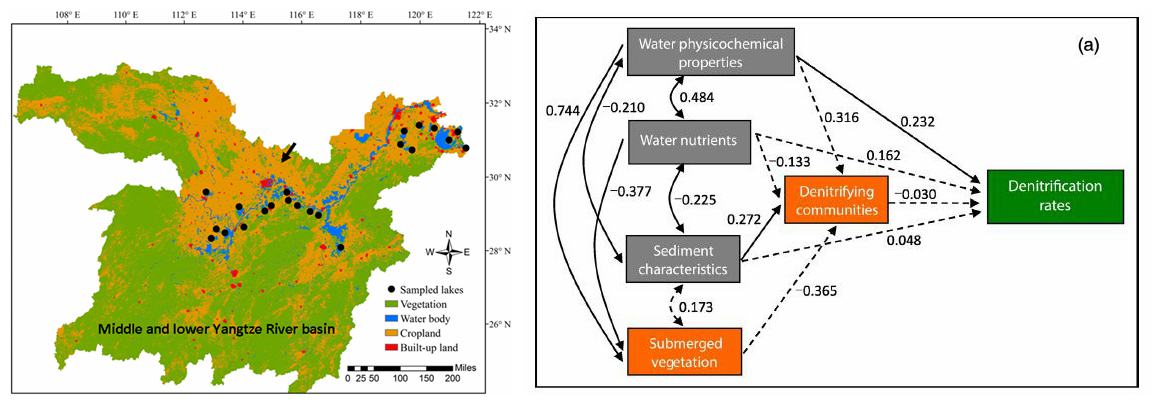
In China, the percentage of eutrophic lakes has rapidly increased from 41.2 % in 1980 to over 80% in 2010. The microbial process of sediment denitrification results in the permanent removal of nitrogen (N) through the conversion of nitrate (NO3–) to nitrous oxide (N2O) and dinitrogen (N2) gases, which can be emitted into the atmosphere. However, to date, the relative contribution of abiotic and biotic factors to the sediment denitrification in lakes remains unknown.
Prof. LIU Wenzhi and Prof. LIU Guihua from Wuhan Botanical Garden of the Chinese Academy of Sciences investigated the unamended denitrification rate and N2O production rate of 74 sediment samples from 22 shallow lakes in the Yangtze River basin.
They also determined the abundance of diversity of nirS and nirK-encoding denitrifiers in sediments using quantitative PCR and clone libraries.
Unvegetated sediments had a denitrification rate slightly but not significantly greater than vegetated sediments. Likewise, there was no significant difference in N2O production rate between unvegetated and vegetated sediments.
Moreover, plant functional groups had no significant effect on denitrification and N2O production rates.
Variance partitioning analyses demonstrated that sediment denitrification rates were controlled mainly by water physicochemical properties and nutrients, such as DO (dissolved oxygen) and NO3‒ in the overlying water column.
Path analyses further revealed that water physicochemical properties and nutrients could affect denitrification and N2O production rates both directly and indirectly.
These findings suggest that the dominant N removal process in Yangtze lakes is largely regulated by abiotic factors rather than diversity and abundance of dentirifiers and submerged macrophytes.
Research results entitled "Sediment denitrification in Yangtze lakes is mainly influenced by environmental conditions but not biological communities" was published in Science of The Total Environment.
This study is supported by National Natural Science Foundation of China.

Sampling lakes in the Yangtze River basin (Left) and results of Path analyses (Right) (Image by LIU Wenzhi)

86-10-68597521 (day)
86-10-68597289 (night)

52 Sanlihe Rd., Xicheng District,
Beijing, China (100864)

